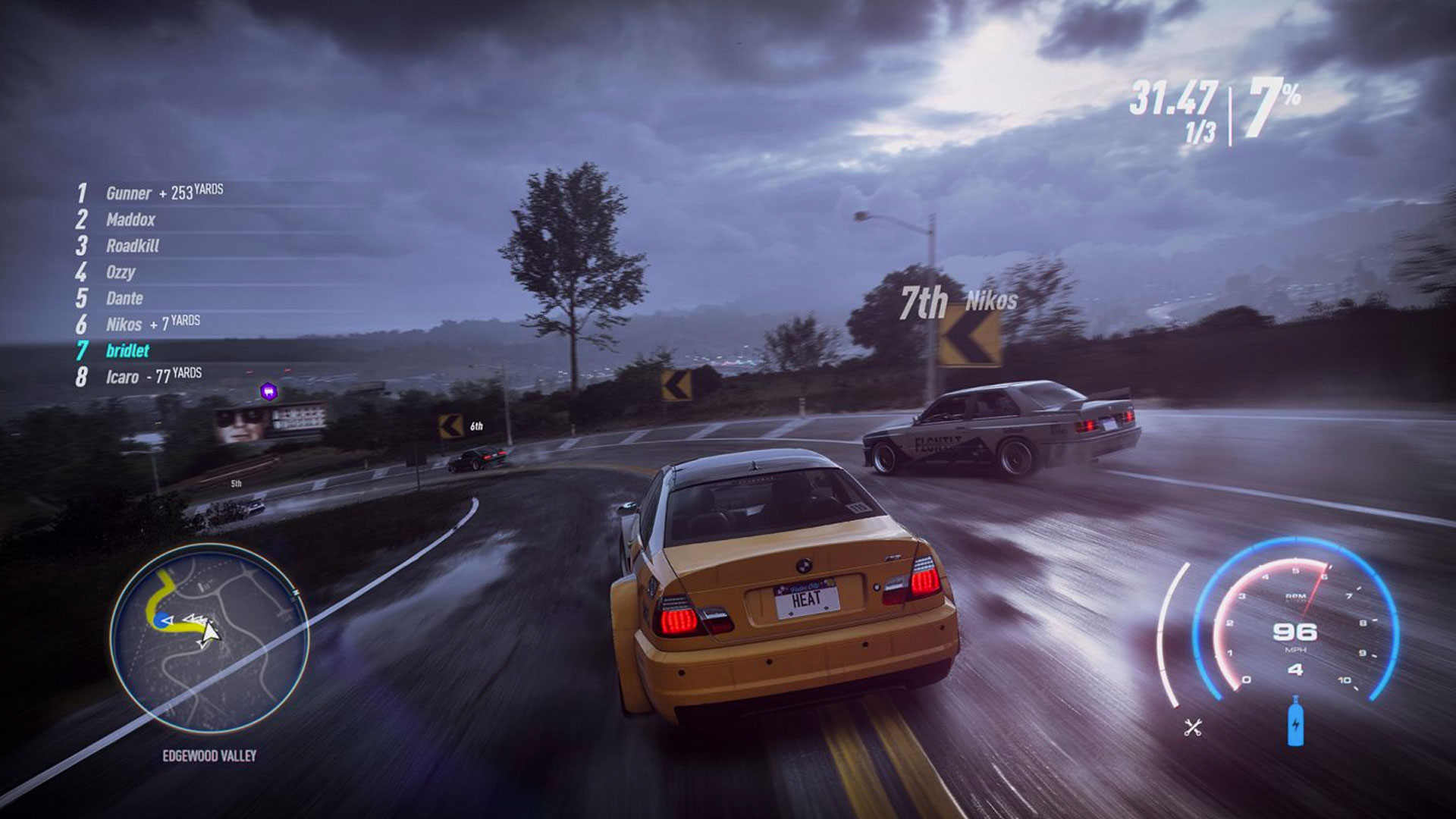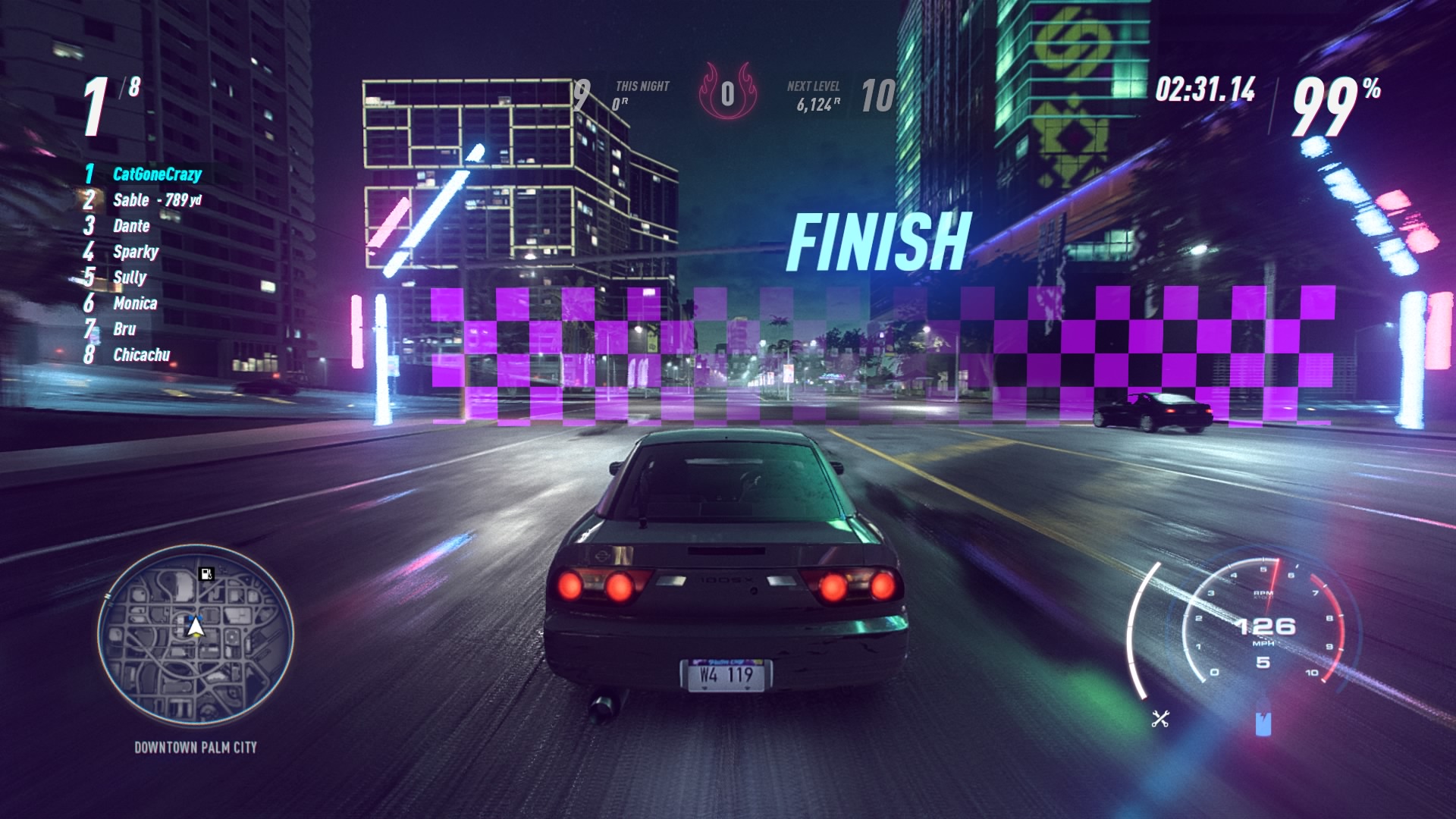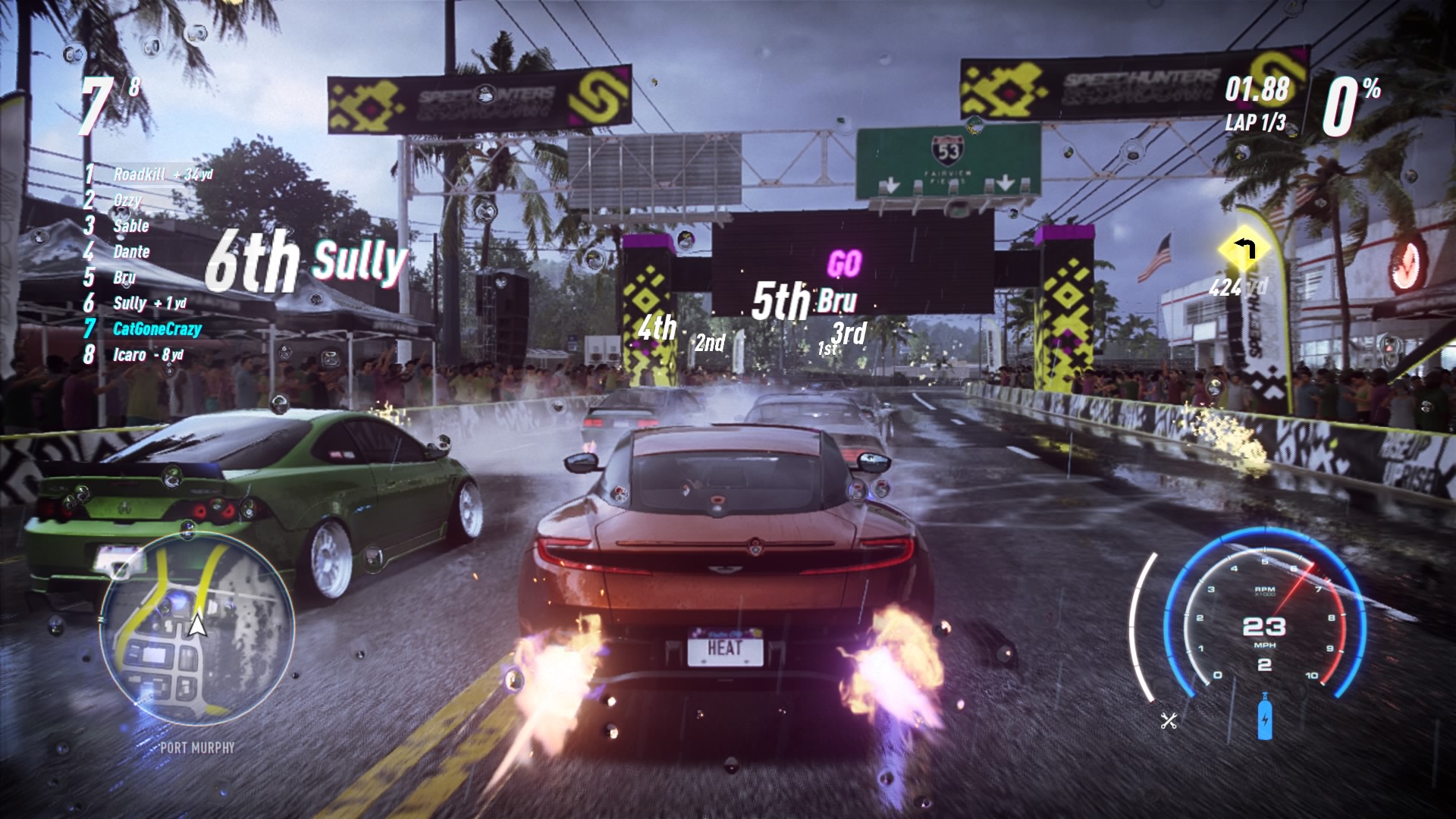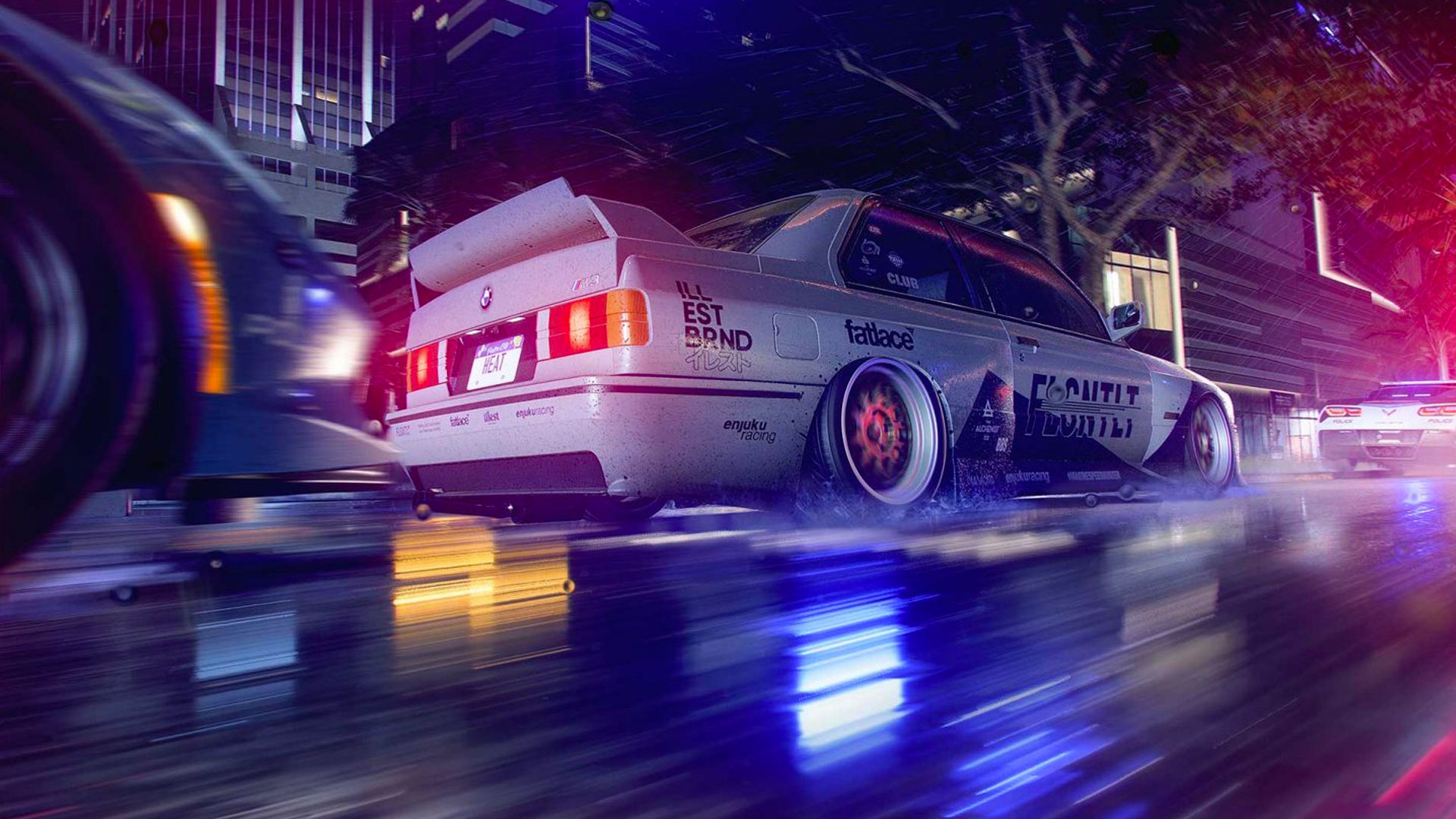GamesRadar+ Verdict
Great modding and a decent game engine can’t disguise the tired story and simplistic driving.
Pros
- +
Solid, fast, controllable driving
- +
Beautiful licensed cars with great-looking mods
- +
The scoring system for the night is well designed
Cons
- -
Samey gameplay that rarely excites
- -
Surviving the night can feel more like luck than skill
- -
All been done (better) before
Why you can trust GamesRadar+
It’s fair to say Need For Speed Underground 2 remains the peak of the street racing side of the series. We’ve had better graphics, bigger environments, online integration and pretty much every other modern mechanism available, but still it’s the one game that fans have longed to see rebooted the most. Well, Need for Speed Heat is here to have another stab at the formula, this time adding laid-back daytime driving to emphasise the action of the streets at night. It’s a great idea, especially when you add the ‘Heat’ reputation multiplier to literally raise the stakes, but this game still feels like a modestly tuned engine starting from cold instead of a snarling beast revving at the limiter.

Release Date: November 8, 2019
Platform(s): PS4, Xbox One, PC
Developer/Publisher: Ghost Games / Electronic Arts
Story-wise, it’s yet another ‘rookie racer looks to make a name for themselves’ narrative that’s so well-trodden it’s down to bedrock. You can choose any of the preset avatars be the lead role, even if what appears to be a spunky protagonist turns out to look like a complete idiot and hilariously out of their depth. Cut scenes like the ‘hiding behind stuff in the same room to eavesdrop’ bit are completely unbelievable, and only the middle of the main story has any emotional clout. It’s at least decently voiced and there’s always radio chatter to keep you company, but you never feel like you’re racing against an actual awe-inspiring league of ace drivers.
Nights into screams

Ah yes, the street racing scene here is an odd one. By day, it’s very civilised as you enter race events to earn ‘bank’ (why can’t they just call it ‘money’?) and visit dealerships to buy new cars. It’s a decent racket, earning $25,000 for a five minute race, but you can’t buy decent upgrades unless the dealers respect you enough. You earn respect at night but - aha! - by night, the cops are out in force to take you down. Police intervention can happen at any time, whether it’s mid race, during a drift challenge, or even while you’re sat looking at the map screen if you’re online, as the game carries on in the background since it can’t actually pause the action. At least you now have the choice between online and offline play, and it closes the map automatically when you’re spotted so you at least have a chance to get away.
- Need For Speed Heat best car: How to pick the top car to suit your events and driving style
- Need For Speed Heat tips
The biggest question posed by the gameplay is on how confident you are in being able to do just that. There’s a clear gambling element to progressing in Need For Speed Heat, but it’s only after a long time that you realise what you’re gambling with: your time. You can speed up your progress by increasing your eponymous Heat gauge to a maximum 5x multiplier each night. Lose the cops and make it to a safehouse and you bank your rep and reset the counter for the next day’s business. Get caught, however, and you lose all your multiplier (though fortunately not your base score, that would be too much). So essentially you’re climbing ladders and sliding down snakes, with the currency of success and failure being real life hours of precious time. You may as well go slow and steady, banking everything as soon as you hit the doubler; you’ll finish the game just as fast as always going for higher and failing, say, every other time.
Of course, that’s a cynical approach and doesn’t consider the increased danger of higher heat levels that undoubtedly make the game more exciting. It takes a while before you realise you need to upgrade certain perks in the garage to be able to withstand protracted chases. All of this stretches out the game’s run-time, while never really offering anything different in the process. You get drift events later on, as well as an optional off-road branch in the story, but the basic gameplay is very, very repetitive, and wholly unoriginal.
Slip-slidin’ away

The car handling is admirably crafted, managing to feel like your ride has actual weight, while also visibly moving like a vintage Need For Speed game. Drifting is now mapped to a single pump of the accelerator while turning, and if you need a tighter turn then hitting the handbrake works, which also kicks in the drift mechanic albeit at a much lower speed. The result is comfortable, assured driving even at 150mph. The movement is solid and smooth, though of course the city’s layout is simplified to accommodate traversal at these unrealistically high speeds.
There’s also another concession to allow all this zooming about; generally, nothing smaller than a house is an obstacle. Fences, bushes, fully-grown palm trees, bus stops, trash cans, street lights and solar farms are all smashable and completely disintegrate even when nudged at 3mph. So instead of looking ahead and carefully plotting a path between all of these things, instead it’s akin to piloting a superfast rocket out in space. As long as you avoid the planets, everything else is just pretty space dust, provided as eye candy and barely slowing you down. Sure, if you plough through successive fence sections, you’ll lose enough speed to get overtaken, but that’s the worst you’ll see. There’s more than a hint of Forza Horizon about the way you smash through thick stone walls without the car damage indicator even flashing, and it makes for an inconsequential racing experience.
The realistic filter of 2015’s Need For Speed’s visuals has been dropped, making for a slightly sharper but less urban look. The draw distance is definitely the most impressive feature of the engine, though the city can look barren and dull in the hard light of day. Palm City is supposed to be a vibrant place, yet the streets have no pedestrians (for obvious reasons - one wrong move and you’d be responsible for a massacre), and traffic is unrealistically light.
Taking the scenic route

It makes much more sense at night when the good residents are tucked up in bed, but even so the city is simply duller than it should be to drive around. It just doesn’t have enough character or classic EA flair. It hits all the right beats with an observatory, a mine, laser-spouting performance arena and even a rocket launch pad, but they feel empty somehow, like they’re movie sets. There’s never the sense of personality or confidence that the games had in the PS2 era, leaving a ‘by numbers’ feel to the whole game, which is disappointing considering the inarguable quality of everything that’s actually happening on the screen.
It all feels stretched out to justify its existence. It takes ages to get your wheels and your gear sorted out, then suddenly the story’s all done in a couple more hours. Of course, playing with your own friends elevates any game’s fun factor, and even solo there’s still loads of other stuff left to do. There are the usual speed traps, jumps, billboards and flamingoes (yes, flamingoes, I wasn’t just checking you were still listening), which will likely take you weeks to check off completely. But unless you really love modding cars, there’s nothing here that’s ever more than mildly entertaining. It’s not a disaster by any means, and it does feel slightly more enjoyable after the first 15 hours (yikes), but the Heat level is somewhere just above lukewarm in this one.
Reviewed on PS4.
Justin was a GamesRadar staffer for 10 years but is now a freelancer, musician and videographer. He's big on retro, Sega and racing games (especially retro Sega racing games) and currently also writes for Play Magazine, Traxion.gg, PC Gamer and TopTenReviews, as well as running his own YouTube channel. Having learned to love all platforms equally after Sega left the hardware industry (sniff), his favourite games include Christmas NiGHTS into Dreams, Zelda BotW, Sea of Thieves, Sega Rally Championship and Treasure Island Dizzy.




